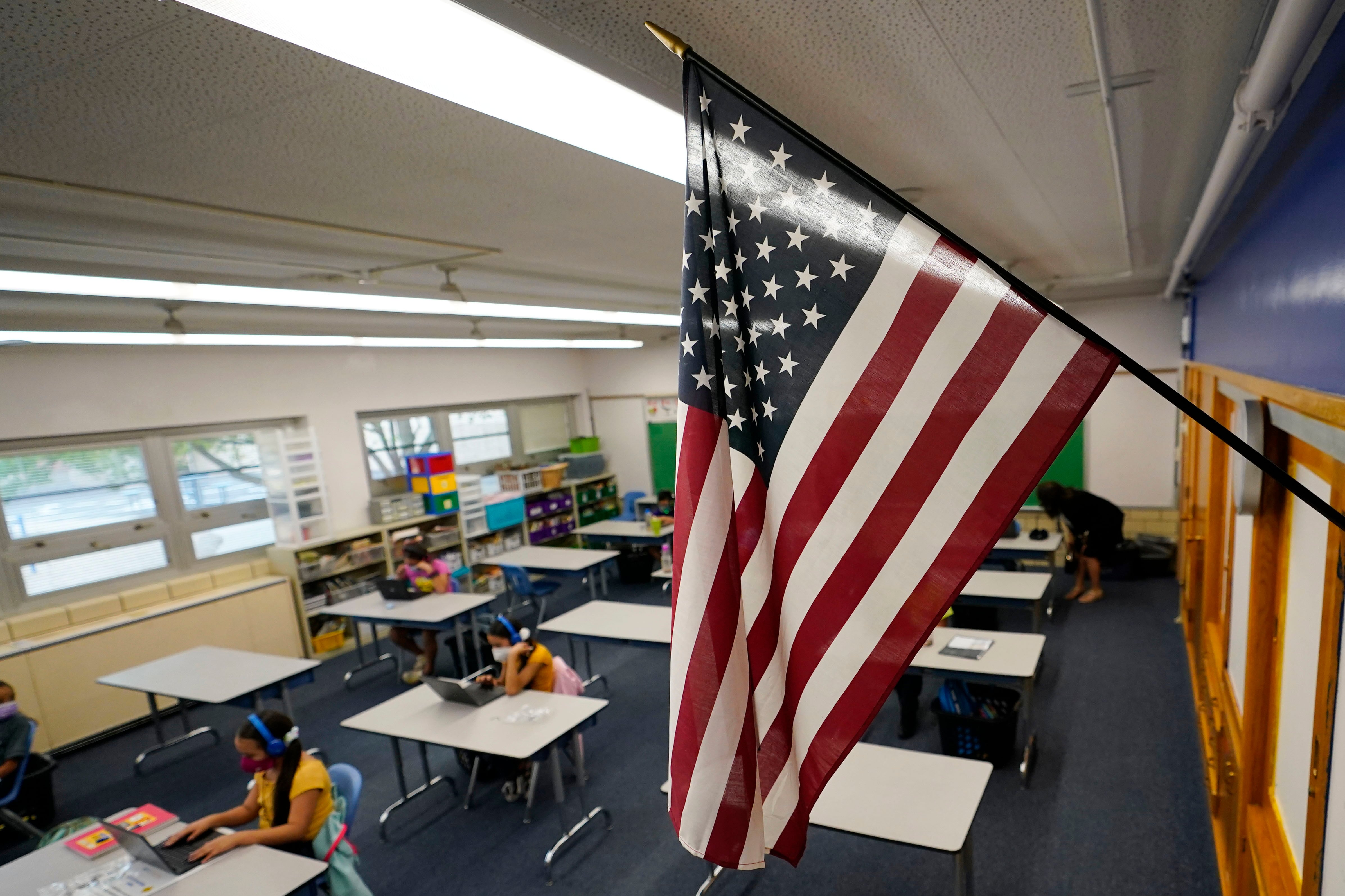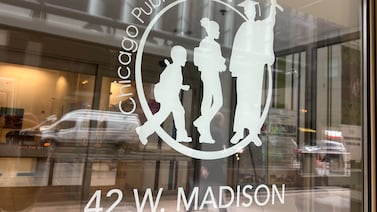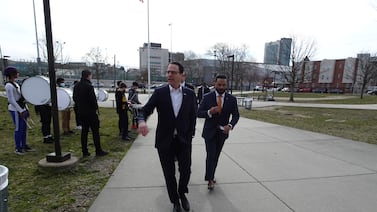Update, Sept. 22, 11:45 a.m.: After this article published Monday afternoon, updated public health data showed two of Denver Public Schools’ metrics in the “red” territory, rather than just one. At a press briefing Tuesday morning, Superintendent Susana Cordova said the second red indicator does not change the district’s approach. Public health officials still attribute the two red indicators to an increase in cases among college students, she said.
Despite rising COVID-19 cases in Denver, the public school system isn’t backing off its plan to gradually reopen classrooms to students over the next month.
Local public health officials who are advising the district attribute the spike in cases to increased transmission among Denver college students, a population “that we presume will have little, if any, contact with grade school children,” they wrote in a letter to the superintendent.
“While the increase in case rates is concerning, we do not think that it mandates a change in the plans of Denver Public Schools to carefully begin in-person instruction,” health officials wrote.
More than 130 students at Regis University in northwest Denver are quarantined due to a cluster of COVID-19 cases in student housing. The University of Denver in the southeast part of the city has reported three outbreaks — each of two or more related cases — involving a residence hall, a gymnastics team, and the campus fitness center.
The latest state data show 12 active outbreaks related to colleges across Colorado. The University of Colorado Boulder announced Monday it was switching to virtual classes for at least two weeks to try to slow the spread of COVID-19 on campus.
Denver Public Schools monitors COVID-19 conditions using a data dashboard that it waited months for local public health officials to develop. The dashboard tracks three main metrics: the number of COVID-19 cases per 100,000 people in Denver over the past 14 days, the rate of increase or decrease, and the percentage of COVID tests that come back positive.
Each metric uses a color-coded scale that mimics a stoplight; for example, green if there are fewer than 50 cases, yellow if there are from 50 to 100, and red for more than 100.
With the dashboard finalized and all metrics green or yellow, the district announced on Sept. 11 that it would gradually reopen classrooms, starting Sept. 28 with kindergarten and first grade. But less than a week later, one of the metrics had turned red.
The number of cases per 100,000 people is now over 100. The change occurred as Denver Public Schools was asking parents to decide whether to send their children to school buildings or remain online at least through the first semester. Elementary parents had until last Friday to decide, while middle and high school parents have until Wednesday.
Superintendent Susana Cordova said that when she saw the one metric turn red last week, she immediately reached out for advice from the Denver Department of Public Health and Environment and Denver Public Health, which created the dashboard.
She said they told her the red metric was “completely attributable” to cases at colleges.
“That gave me a lot of comfort,” she said Friday.
Denver school board President Carrie Olson also spoke to public health officials.
“I thought it was helpful today with the doctors where they described the red light as a red flashing light, like ‘proceed with caution,’” Olson said during a Facebook Live Q&A. “There’s something here to think about but not necessarily a full stop.”
That seems to be the approach Denver Public Schools will take moving forward. Public health officials “have been clear that actions cannot be based on just one of the indicators,” spokesperson Winna MacLaren said. “The reason we have three indicators is because there is not one single indicator that can guide” the decision of whether to open or close schools.
But what if two indicators are red? Or three? There are no hard and fast rules. MacLaren said the district will continue working with health officials to monitor conditions and respond.
Cordova said the district is working to add to the dashboard data that is specific to Denver Public Schools. Currently, the dashboard measures community spread of COVID-19 in Denver, “not conditions in Denver Public Schools,” MacLaren added. “A key role our Denver Health partners play is to help us understand when and how community conditions impact P-12 schools and the precautions we can take in our schools in response.”
The district has been providing free COVID-19 testing to staff. Of the 2,410 people who’d gotten tested as of a week ago, 25 were positive, according to data presented to the school board last Monday. The district’s total positivity rate was 1.1%, lower than the city as a whole.
Until recently, there were no statewide guidelines for when it is safe enough to open schools. Even now, as long as counties aren’t under stay-at-home orders, it’s up to school districts whether to operate remotely or offer in-person classes full- or part-time.
Many school districts continue to rely on their own systems or dashboards. Local conditions also vary. The Douglas County school district, which has been operating on a hybrid schedule, recently decided to bring elementary students back full-time based on improving conditions there. In the Roaring Fork district, which started the year remotely, the school board last week halted its reopening plan after several metrics indicated growing hazards.







